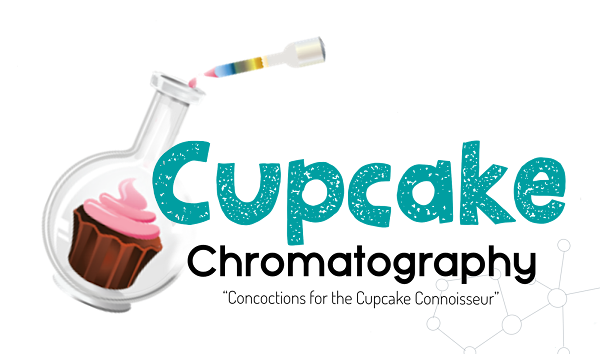
When you think about things that glow in the dark, what is the first thing that comes to your mind?
For me, I think back to those wash off, glow in the dark tattoos that would come packaged with chewing gum as a kid. We would make a binocular with one fist over the tattoo, and cover it with one eye to catch a glimpse of it glowing... Back then, black lights weren't readily available, nor did I know they existed... I think that my first introduction to black lights, that I can remember, was probably seeing them on the MTV show Room Raiders... After that, I noticed they were used in clubs with "invisible ink" to mark patrons etc. And of course by the time I started studying forensic science, black light aka ultraviolet light was everywhere! Now they're on cupcakes, and just in time for Halloween! You won't believe how simple it is to make cake and frosting glow in the dark!!
As you read on, I have to tell you how difficult it is to shoot anything under black light, and I guess even more so when you're not using a professional camera... Nevertheless, to get a sense of what the glowing frosting looks like under various lighting, I've broken it down in the photos below:
 |
| Under black light only |
 |
| With all lights off at night |
 |
| With the regular lights on at night |
So how did I get the cake and frosting to glow? TONIC WATER!
 |
| Quinine Flower from Nature Inquirie |
Long ago, quinine was added to water to create tonic water as a means of preventing against malaria. Drinking gin with tonic water became a popular way to chase the bitter flavor of quinine. Today, quinine is still added to water but in smaller quantities.
 |
| Chemical Structure of Quinin |
What causes quinine to glow or fluoresce? Its quantum yield... (bear with me here)
When a substance is exposed to light it absorbs and emits photons at the same time. A photon is a bundle of light/ electromagnetic radiation. Quantum yield is the ratio of photons absorbed to photons emitted. In the case of quinine, when exposed to ultraviolet light the photons absorbed trigger an emission that appears to glow to the naked eye.I first discovered the glowing frosting trick on Instructables and I tested both methods described in the "Ghoulishly Glowing Cupcakes" post. But after experimenting with the recipe I had to tweek it and concoct my own.

Glowing Coconut Frosting
(Good vegan recipe)
Materials:1 cup vegetable spread/ butter
3 tablespoons pure coconut cream
0. 5 tsp coconut flavoring
4 . 5 cups confectioners sugar
4 tablespoons tonic water
Method:
Using a mixer on medium speed, cream vegetable spread, coconut flavoring and coconut cream with tonic water for about 15 minutes until uniformly incorporated. (Mixture will begin to look white and fluffy) Fold in confectioners sugar and continue creaming mixture until light and airy. Pipe on to your cooled cupcakes and watch them glow! (This frosting glows even brighter right out of the refrigerator)
Note:
As the frosting sets in the pattern you created, tonic water is slightly absorbed by the cake, if the cake is a light color you will see it glow too!
Tonic water glowing only works for light to white colored frosting and does not wear off. (I kept a small sample in the fridge after I performed a similar experiment using cream cheese frosting about a month ago and it still glows!)
Some other cool things I discovered : Many everyday things glow under black light, like grocery tags, labels on food products, warning signs on household appliances. Remember my Sleekstore Measuring Cups? Check out the photos below!
 |
| Regular Light |
 |
| Black Light |



No comments:
Post a Comment
Your contribution and comments to this experiment is a great catalyst. Thank you for your participation!